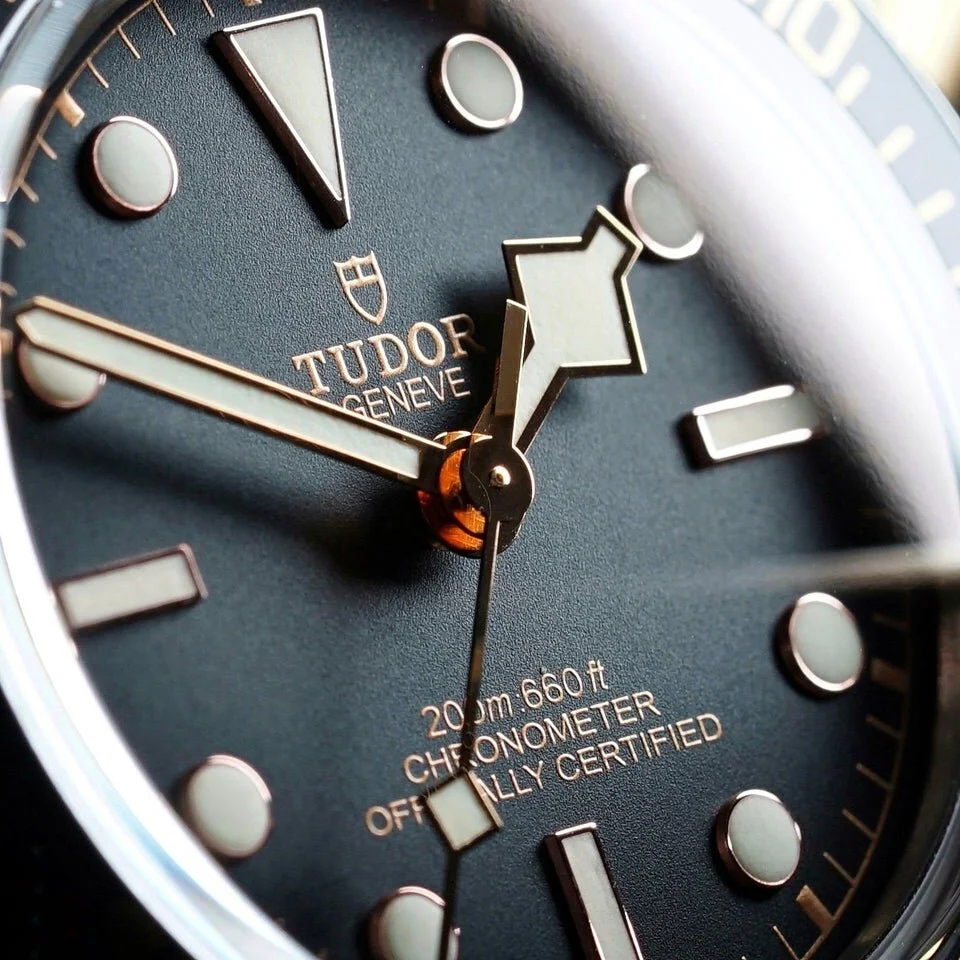This article is not meant to take a position on what defines a “gilt” dial, but rather to present information so that collectors can be more informed about the various potential uses of the term.
From the 1950s into the 1960s, many brands produced gilt dials for their timepieces. Most commonly associated with deep black dials and gold-hued text that gives the watch a warm and unmistakably vintage look, the technique is actually quite versatile. But, “gilt” is also one of those words — along with “patina”, “tropical” and a bevy of other words that don’t necessarily mean what one might think they mean — that is perhaps used more than it is truly understood in the watch world.
Because of its distinctive warm look, gilt dials of all types from any brand can be extremely desirable and collectible, but it’s important to understand the various ways in which the term gilt might be used to properly evaluate these dials.
The printing press
As with most things in vintage watch collecting (especially those that arose largely from the vintage Rolex collecting community), the answer to this question isn’t straightforward (warranting a spirited 11-page discussion years ago, which I’d submit you read yourself so you can draw independent conclusions as to the “true” definition of gilt).
The dictionary definition of gilt is “anything covered thinly with a layer of gold.” To some collectors, then, any dial with gold-colored lettering is a gilt dial. But for clarity, dials with gold print applied on top of the surface will sometimes now be referred to as “gilt print” or “gilt writing” dials to differentiate them from those produced using the gilt process described below.
Some have referred to the modern Tudor Black Bay 58 as a black dial with “gilt writing” or “gilt print” | Reddit
A vintage Tudor Submariner reference 7928: Or, can silver print be “gilt”?
Others have argued that gilt really defines an era, from the 1950s through the mid-1960s, defined by the (often) gold text and glossy black dials produced using any number of techniques. This argument leans on the fact that gilt is commonly used as a blanket term to refer to dials that pre-date the matte dials of the 1970s. (Matte dials are defined by a flatter, greyish color that doesn’t shine the same way glossy dials do. But, the difference between glossy and matte dials is the topic for another article.) Add to this the fact that one can find pre-matte dials that featured silver (not gold) print — some of Tudor’s sports watches representing a prominent example of this — but are still often referred to colloquially as gilt dials by collectors.
Gilt: Trust the process
However, to some collectors, a “true” gilt is defined by the time-intensive process that exposes the underlying metal of the dial in negative relief. This often results in golden text and markers, because the technique exposes the blank brass underneath the dial’s face, but that need not be the case for a gilt dial produced using this method (it could also expose yellow or white gold, silver, or another material that’s been applied to the underlying plate). Thus, “true” gilt describes not gold-colored print, but a manufacturing process.
Producing a “true” gilt dial is an intensive process. First, the blank brass is highly polished to a mirror finish. Then, the desired design — text, name, logo, markers — is printed or stamped with a special clear coating. Then, black paint is galvanically applied to the dial; the applied clear coating prevents this paint from binding to those parts of the dial. Lastly, a clear lacquer coating is added to the dial to give it a “glossy”, shiny finish. Thus, for clarity, you’ll often find dials manufactured using this process referred to as “glossy gilt” dials to further differentiate them from dials that might simply have applied gold print. After the lacquering process, additional print may be added. For example, Rolex often printed depth ratings in white print after lacquering. Rolex produced glossy-gilt dials on a number of watches until around 1967.
On these glossy gilt dials, you’ll find the print produced using this gilt process is slightly recessed to the dial’s surface. Further, the light plays differently on the gilt text at different angles, rendering it anything from a bright white to a deep bronze. Further, the applied lacquer prevents corrosion of the underlying metal, so as long as the lacquer remains in tact, the polished plate will remain sharp and shiny. But, given the age of many of these glossy gilt watches, some have began to show signs of age — the “spidering” evident on many of these watches is the lacquer cracking — and the golden hue of the underlying gilt gives way to a warm amber or orange.
A glossy gilt dial Rolex Submariner. The “Submariner” is produced using the “gilt” process, while the depth rating was printed after | VRF
To get semantic for a moment, this is actually a technique similar to that used to created gold-plated jewelry or watch cases (i.e., “gilt” jewelry or watches) . So, it might be technically accurate to refer to this dial creation process as gilt, though it confuses the matter because there is no gold actually involved in the galvanizing process used to produce a gilt dial.
Further reading: Rolex Passion has an informative post with plenty of images of gilt Rolex dials.


